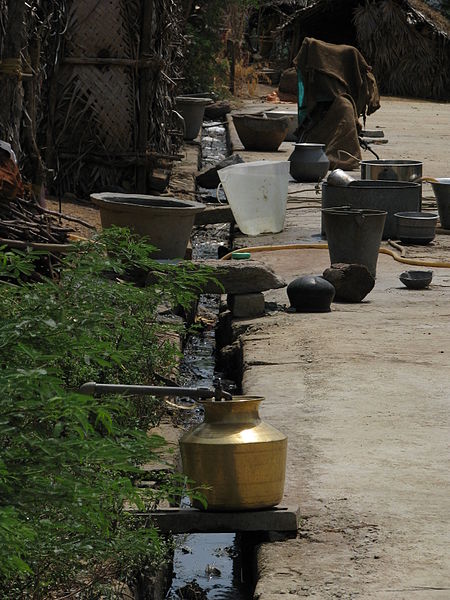Unlike cities and towns who receive their primary water supply from major rivers and lakes in the region, rural regions across India depend on rivulets, streams and springs to fulfil their water needs. These sources of water also play a crucial role in sustaining the groundwater table in the vicinity.
However, poor water management and the one-borewell-per-household system have ended up severely exhausting the water resources in many regions in recent times, even in topographies that once had a perennial supply of freshwater.
The story of the Madanthyar village near Mangaluru, Karnataka was quite the same. Despite having an average annual rainfall of 4,000-4,500 mm, the village had begun to suffer from acute water scarcity with rivulets and springs drying up in the recent years.
Many reasons contributed to this shortage—rampant conversion of paddy fields to arecanut plantations, extensive fragmentation of landholdings, lesser community participation and individual borewells.

Where people could once draw water at a depth of about 65-135 feet in borewells, the situation turned dire when this depth dipped down to a staggering 400 feet and more. Plus, there were more than 50 borewells within a one square kilometre radius of Madanthyar, which played a central role in draining its springs, streams and rivulets.
Fortunately, one professor and his group of students from the Sacred Heart College in Madanthyar came forward to resolve this crisis.
Using traditional water conservation methods like check dams, water percolation pits, and roof-water harvesting, Joseph NM, who is an Economics professor at the college, along with over 100 students together from Sacred Heart College and another college in neighbouring village of Belthangady, have been able to resuscitate six check dams across the Artilahalla rivulet.
You may also like: How One Woman Made 100 Villages in Rajasthan Fertile Using Traditional Water Harvesting Methods
“The region suffers from water scarcity not because of less rainfall or the increase in population but due to the sheer negligence in water resource management. Although the Belthangady taluk has around 2,000 check dams, barely 10 percent of them are functional. Mud bunds were a vital part of farming in the olden days. There was community participation in building bunds as many farmers had vast holdings of paddy fields,” said Joseph, whose doctoral thesis was on water resource management in Belthangady taluk, to BusinessLine.
In this pursuit, the professor found full support from his college. In fact, the students from the college have even given themselves the moniker of Jala Kranti (water revolution) team, which quite befittingly highlights their crusade. Using local amenities like sandbags and mud, they constructed check dams that have a water-holding capacity up to 1-1.5 km.
Because of this intervention, the sub-surface water flow has helped in the irrigation of about 125 acres of farmland managed by 300 farmers, explained Vivek Pais, coordinator of the Sacred Heart Watershed Committee.
According to Melwyn D’Souza, one of the farmers who has directly benefitted from the check dams, these structures have helped revive the water table across open wells and ponds in his locality, which had almost run dry last year.
While the professor has been on the forefront of the water revolution in the village, he has also been practising these methods, personally. About 10 lakh litres of rainwater is harvested and used in his home, and almost half of this amount is utilised to revitalise the open well.
“Rainwater harvesting is not just about digging percolation pits or roof-water harvesting. Rejuvenation of open wells, ponds, and check dams should be a part of such an exercise. This will help recharge the water table,” added Joseph.
(Edited by Gayatri Mishra)
Featured Image Source: pxhere.
Like this story? Or have something to share?
Write to us: contact@thebetterindia.com
Connect with us on Facebook and Twitter.
NEW: Click here to get positive news on WhatsApp!
If you found our stories insightful, informative, or even just enjoyable, we invite you to consider making a voluntary payment to support the work we do at The Better India. Your contribution helps us continue producing quality content that educates, inspires, and drives positive change.
Choose one of the payment options below for your contribution-
By paying for the stories you value, you directly contribute to sustaining our efforts focused on making a difference in the world. Together, let's ensure that impactful stories continue to be told and shared, enriching lives and communities alike.
Thank you for your support. Here are some frequently asked questions you might find helpful to know why you are contributing?

